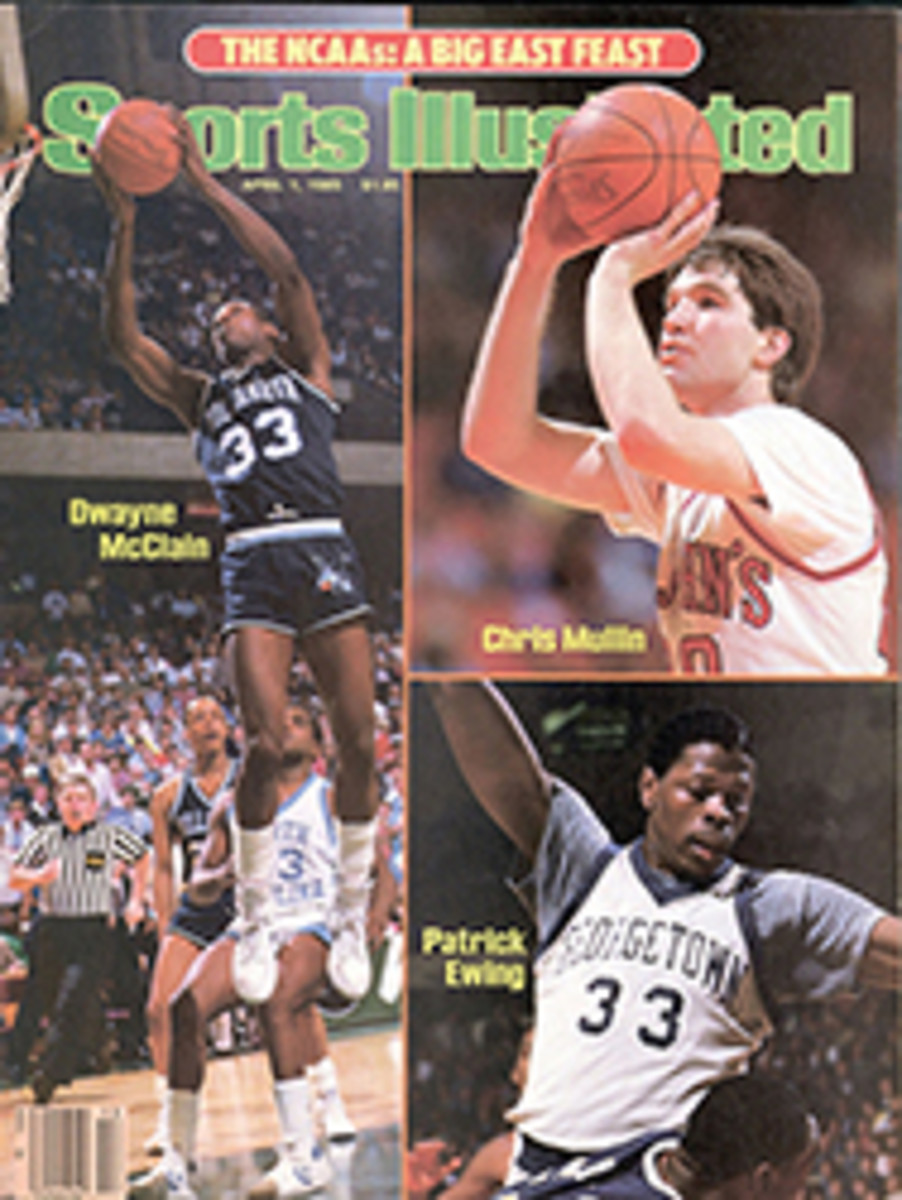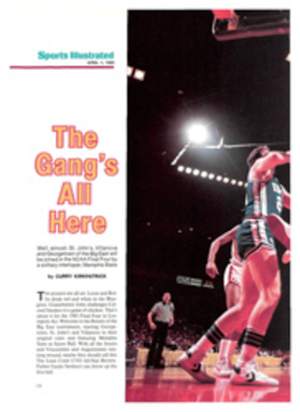
Day And Night, A.J. Was Just Right
Evils lurk on the Sebring sports car circuit after sundown. Ask Jim Busby. There he was, zooming down the front straight in his Porsche 962, leading the 12 Hours of Sebring. He was at the front after some 175 trouble-free laps since the race start at 11 a.m. last Saturday. But now over his shoulder was the gigantic orange ball of the setting Florida sun. The fun was about to begin.
Busby pitched the Porsche into Turn 1 at 150 miles an hour. And...ka-Boom! The explosion under his knees blew a hole in the floorboard of his $220,000 race car, peeling back the aluminum like a cherry bomb splitting a sardine can, cutting his legs but sparing more private parts. He was struck down as so many others have been at Sebring: attacked by a chunk of automobile litter that the rough circuit had ripped off another car.
This was the 33rd running of America's oldest professional sports car race, on a track that jogs for 4.86 miles around the Sebring Air Terminal, a bomber training base built during World War II. The desolate, parched-concrete back straight stretches like a dry lake bed for 5,100 feet, and that's where most of the flotsam is to be found: exhaust pipes hunks of bodywork and shattered brake discs, as well as concrete chips kicked up by the pounding horsepower, as if the track's fillings were falling out.
The key to every Sebring is survival, pure and simple. No fewer than 10 GTP-class cars—exotic prototypes—were capable of winning this year's race. But by early afternoon fully half of them were out of contention with assorted mechanical troubles. Among the cripples: the 962 that had set a new qualifying record of 2:13 in the hands of German driver Hans Stuck; the booming Blue Thunder March-Chevy of defending IMSA champion Randy Lanier; the tire-smoking March-Buick V-6 turbo of John Paul Jr.; the spine-tingling V-12 Jaguar of Hurley Haywood.
Which left things to Busby, John Morton and Jochen Mass, sharing the wheel of a handsome white and black 962. At 6 p.m. they had a one-lap lead over the orange 962 of A.J. Foyt and Bob Wollek. And there was yet another 962 lurking back there in the twilight: the dark blue and white car of Al Holbert, Derek Bell and Al Unser Jr., which Holbert and Bell had driven to victory four weeks earlier in the Miami Grand Prix. For Sebring, Holbert, who twice has won this race, had reinforced the car's belly with a steel plate, specifically to prevent what had happened to Busby.
Starting on the front row, Holbert had gotten through all of three turns when the left front wheel fell off. Then, adding injury to insult, as Holbert was limping back to the pits on three wheels, the Porsche was struck by another car. By the time Holbert reached the sanctuary of his pit and the damage was mended, his car was nine laps down and in 73rd place out of 74 starters. Said his co-driver, Bell, "This 12-hour race has just become an 11½-hour sprint for us." Holbert rejoined the race with the turbocharger boost turned up and began cutting laps faster than he had qualified—setting the fastest race lap of 2:15.7 in the process.
Now it's eight hours later. Darkness has fallen, as has the Busby Porsche. Foyt and Wollek are in first with a four-lap lead over ...guess who: Holbert/Bell/Unser. Foyt and Bell, who don't particularly care for each other—although they drove together at Sebring last year—are on the track together. The chase is on, with 3½ hours of Sebring night to go.
First gear is unusable in Foyt's car and Bell is having trouble finding fifth; other than that, both cars are running strong. Foyt had run off the track, and his bounce through the boondocks had broken the seat mounts. But no big deal, this is Sebring. Something had leaped off the track and knocked out one of Bell's four headlights. So what; in 1983 Holbert led Sebring with no lights.
Bell knows his mission: blow the doors off Foyt—a man who has won the Indianapolis 500 a record four times, has won the Daytona 500 and has won the 24 Hours of Le Mans. The Holbert crew begins to post both Bell's and Foyt's lap times on the pit board so Bell can see how much time he is gaining per lap. It's no secret that A.J., with his 50-year-old eyes, is not fond of night driving. The board shows low 2:20s for Bell, low 2:30s for Foyt.
At 8 p.m. Foyt loses his left front wheel—the irony of it all—and must pit. Bell gains a lap during A.J.'s stop.
At 8:25 Bell is coming up behind Foyt and gobbling up ground fast. When he blows past, the lead is down to just two laps—less than five minutes to make up now, with 2½ hours in which to do it.
But then Super Tex shows 'em why he's called that. Did he turn up the boost in his engine, or his mettle? Whichever, he doesn't allow Bell to gain another inch. Using the one operative taillight of the second-place Porsche to show him around the dark track, Foyt follows Bell down to the 2:23s. For the rest of their shared shift behind the wheel they run together, the bazooka-like tailpipes of their coupled 962s belching fiery twin plumes of turbocharger afterburn whenever they back off the gas.
Shortly after Bell's next gas stop, his gearbox begins getting worse, and he is instructed to baby the car. Still, he comes back in the pit smoking, and a bucket of water is poured over the gearbox to cool it off. "Something's come apart in there," says Holbert, indicating that it's the end of the sensational charge from last place toward first. At 11 p.m. the Foyt/Wollek Porsche's winning margin is back up to four laps, and they have achieved a record average speed of 113.787 mph.
What an odd couple Foyt and Wollek are: Super Tex and the Frenchman. And a winning one, too: They also took the Daytona 24-hour in February. They were first teamed at the 1983 Daytona when car owner Preston Henn recruited A.J. in the middle of the race. The move had temporarily outraged Wollek, because at that time Foyt hadn't driven in a sports car race since his Le Mans win in 1967. That prompted Wollek to utter an unprintable epithet on live television, to which Foyt responded in less flamboyant terms. But Wollek cooled off when Foyt drove perfectly in the rain, and they won the race. Today they are bosom-buddy teammates who like to needle each other. Wollek usually picks on Foyt's big belly, Foyt on Wollek's Gallic mispronunciations. But nobody picks on them out there on the racecourse.
PHOTO
GEORGE TIEDEMANN
Wollek and A.J. (both waving) celebrated a shared second win of the season after their No. 8 Porsche 962 made its record run.
PHOTO
RED MORGAN
[See caption above.]
PHOTO
AL SATTERWHITE
[See caption above.]
PHOTO
GEORGE TIEDEMANN
Not a holdup, just race marshals trying to protect one of Sebring's 47 dropouts.

